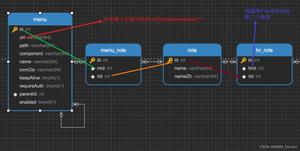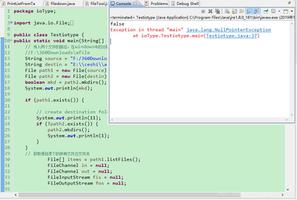vue+elementui搭建后台管理界面(6登录和菜单权限控制)

不同的权限对应不同的路由(菜单),同时侧边栏也根据权限异步生成,实现登录和鉴权思路如下:
- 登录:点击登录,服务器验证通过后返回一个 token ,然后存到 cookie,再根据 token 拉取用户权限
- 鉴权:通过 token 获取对应的roles, 计算有权限的路由,使用 router.addRoutes 动态加载路由
数据和操作通过 vuex 进行控制
1 登录
登录按钮 click 事件触发登录动作:
/** ...省略的代码 */this.$store.dispatch(\'LoginByUsername\', {
\'username\': username, \'password\': password
})
.then(() => {
this.logining = false
this.$notify.success({
message: \'欢迎登录\',
duration: 3 * 1000,
})
// 重定向到首页
this.$router.push({ path: this.redirect || \'/\' })
})
.catch(err => {
this.logining = false
this.$alert(err, {
type: \'warning\',
confirmButtonText: \'ok\'
})
})
/** ...省略的代码 */
action:
// 登入LoginByUsername({commit }, userInfo){
const username = userInfo.username.trim()
return new Promise((resolve, reject) => {
loginByUsernameApi(username, userInfo.password)
.then(response=> {
const data = response.data
setToken(data.token) // 储存token
commit(\'SET_TOKEN\', data.token)
commit(\'SET_ACCOUNT\', username)
resolve()
})
.catch(err => {
reject(err)
})
})
}
/** ...省略的代码 */
登录成功,服务端返回一个token,然后储存到本地 cookie。
2 获取用户权限
对每个路由,在全局钩子 router.beforeEach 中拦截,判断是否已获取token,之后再获取用户的基本信息
/** ...省略的代码 */if(store.getters.token) {
// 判断当前用户是否已拉取完user_info信息
if(store.getters.roles.length === 0){
// 拉取用户信息
store.dispatch(\'GetUserInfo\').then(resp => {
const roles = resp.data.roles
next()
/** ...省略的代码 */
})
})
}
}
/** ...省略的代码 */
action:
// 获取用户信息, 名称、头像、权限GetUserInfo({commit, state}) {
return new Promise((resolve, reject) => {
getLoginUserInfoApi(state.token)
.then(response => {
if(!response.data){
reject(\'error\')
}
const data = response.data
const roles = data.data
if(roles && roles.length > 0){
commit(\'SET_ROLES\', roles)
}else {
reject()
}
if(data.name){
commit(\'SET_NAME\', data.name)
}
if(data.avatar){
commit(\'SET_AVATAR\', data.avatar)
}
response.data.roles = roles
resolve(response)
})
.catch(err => {
reject(err)
})
})
},
3 菜单权限
前端保存一份路由表,记录每一个路由和需要的权限。
再根据用户信息里的 roles 计算对应的权限,然后生成有权限的菜单,再挂载路由。
但这只是页面控制,后端也要相应的做权限验证。
- 创建vue实例时使用vue-router挂载登录和一些公用页面,如首页、图表等
- 用户登录后,将获取的roles和路由表的权限比较,生成用户可访问的路由表
- 调用router.addRoutes添加可访问的路由
- 使用vuex管理路由表,生成侧边栏菜单
首先是 router.js 路由表
import Vue from \'vue\'import Router from \'vue-router\'
import Container from \'@/containers/Container\'
import Login from \'@/views/login\'
import Page404 from \'@/views/404\'
import Dashboard from \'@/views/dashboard\'
/** router modules */
import systemRouter from \'./modules/system\'
Vue.use(Router)
export const constantRouterMap = [
{
path: \'/login\',
hidden: true,
component: Login
},
{
path: \'/404\',
hidden: true,
component: Page404
},
{
path: \'/\',
redirect: \'/dashboard\',
component: Container,
name: \'首页\',
hidden: false,
meta: { title: \'首页\', icon: \'\', noCache: true },
children: [
{
path: \'dashboard\',
name: \'Dashboard\',
component: Dashboard,
meta: { title: \'首页\', icon: \'fa fa-dashboard fa-lg\', noCache: true }
},
{
path: \'table\',
name: \'表格综合实例\',
component: Form,
meta: { title: \'表格综合实例\', icon: \'\', noCache: true }
},
// { path: \'*\', redirect: \'/404\', hidden: true }
]
},
]
export default new Router({
mode: \'hash\',
scrollBehavior: () => ({ y: 0 }),
routes: constantRouterMap
})
export const asyncRouterMap = [
/** 其他的异步路由表 */
systemRouter,
{ path: \'*\', redirect: \'/404\', hidden: true }
]
同级目录下的 ./modules/system.js 路由表
import Container from \'@/containers/Container\'/**
* 系统管理相关路由
*/
const systemRouter = {
path: \'/system\',
component: Container,
redirect: \'/system/permit/account\',
name: \'系统管理\',
meta: {
title: \'系统管理\',
roles: [\'/system\']
},
children: [
{
path: \'permit\',
name: \'权限管理\',
hidden: false,
redirect: \'/system/permit/account\',
component: () => import(\'@/views/system/permit\'),
meta: {
title: \'权限管理\',
icon: \'fa fa-cog fa-lg\',
roles: [\'/system/permit\']
},
children: [
{ path: \'account\', name: \'用户\',
component: () => import(\'@/views/system/permit/account\'),
meta: { title: \'用户\', icon: \'form\', roles: [\'/system/permit/account\'] }
},
{ path: \'accountgroup\', name: \'用户组\',
component: () => import(\'@/views/system/permit/accountgroup\'),
meta: { title: \'用户组\', icon: \'form\', roles: [\'/system/permit/accountgroup\'] }
},
{ path: \'role\', name: \'角色\',
component: () => import(\'@/views/system/permit/role\'),
meta: { title: \'角色\', icon: \'form\', roles: [\'/system/permit/role\'] }
},
{ path: \'authorize\', name: \'授权\',
component: () => import(\'@/views/system/permit/authorize\'),
meta: { title: \'授权\', icon: \'form\', roles: [\'/system/permit/authorize\'] }
},
]
},
],
}
export default systemRouter
roles: [\'/system/permit/account\'] 表示该页面需要的权限是 \'/system/permit/account\' 后端返回的 roles 里有这个记录则能访问对应的页面
而 \'/system/permit/account\' 是 \'/system/permit\' 的子路由,所以要访问 \'/system/permit/account\',后端返回:
roles: [\'/system\', \'/system/permit\', \'/system/permit/account\']
注意: 404页面要最后加载,如果放在 constantRouterMap 中,所有后面的页面都会被拦截到404
以上是 vue+elementui搭建后台管理界面(6登录和菜单权限控制) 的全部内容, 来源链接: utcz.com/z/376175.html





